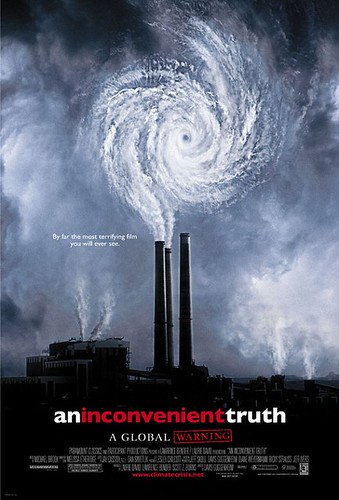Contempt of the citizenry
I received this in email from someone in Arlington County...
Watch & Discuss "An Inconvenient Truth"
As part of the Arlington Reads Green program (and in the spirit of the County’s Fresh AIRE initiative), Arlington’s Libraries dept. is sponsoring two informal discussions of Al Gore’s Academy Award–winning film documentary, “An Inconvenient Truth,” for County employees.
Discussions will take place on:
Friday, April 27 3 – 4 p.m.
Central Library, 2nd Floor Meeting Room
Friday, May 25 3 – 4 p.m.
CHP, Room 600
Enrollment will be limited to 20 per discussion group; attendees should register via [Arlington County-specific procedures deleted] by Monday, April 9. The library will lend DVD copies of the film to each county staff member enrolled in the discussion group, for viewing at home.

------------------------------------------
My response:
This is so frustrating!
I know that ArCo is not nirvana, but there is a focus on building deliberative informed capacity on the part of citizens and staff, and engaging with citizens generally. (The way that Arlington County mounts its County Fair, including having all county departments represented with displays, and by staff, including the County Manager, Ron Carlee, is another example.)
(It also puts into perspective Fairfax County's new green initiative, as reported on by the Post yesterday, in "Own Offices Mock Plan For 'Green' Fairfax." From the article:
· Of about 11,000 county employees, only 135 are known to use bus, rail or vanpools to get to work, according to county data. The ratio is even smaller at the 2,900-parking-spot government center, where about 1,700 county workers are based.
Sounds like the most important thing Fairfax ought to be focusing on is eliminating free parking for government employees. This is the same county where workers would trade cars around to boost up mileage driven so that otherwise underutilized county vehicles wouldn't have to be returned to the vehicle management division. See "Fairfax Employees Run Up Odometers To Keep Their Cars," subtitled "Policy to Trim Fleet Sets Required Minimum Mileage.")
Last week, I was in Seattle for the National Main Street conference, and I was struck by many many differences in how the government there approaches the citizenry including:
1. No metal detectors/security stations at the City Hall, City Municipal Building, and the Central Library
2. During certain times of the year they hold lunchtime concerts at City Hall (what does that say about reaching out to citizens?)
3. The building and planning department probably has one of the more extensive printed information systems providing guidance to users. By way of comparison, DC provides almost no comparable information, except for historic district matters. (Documents are available on the Department of Planning and Development Technical Codes page. And the printed documents are available in the office, well organized and displayed [I haven't uploaded the photos yet], and they aren't half-a** copies either, but typeset and printed.)
4. The City has 13 Neighborhood District Councils (and a Dept. of Neighborhoods, and field offices), and each has a full-time city employee assigned as staff.
Seattle's Neighborhood Councils are different than DC's Advisory Neighborhood Commissions.
1. The aren't elected bodies but appointed, based on membership from community, business, and other other stakeholder organizations within a defined geography.
2. The Neighborhood Councils in turn are part of a Citywide Council, comprised of the chairs of each of the Neighborhood Councils.
3. And the Citywide Council has standing committees, such as on Transportation, focusing neighborhood attention on issues in ways that support citywide, less parochial objectives.
You can really see the difference between a political ethos that embraces citizenry and civic engagement or instead is contemptuous of it.
Labels: civic engagement, good government



0 Comments:
Post a Comment
<< Home